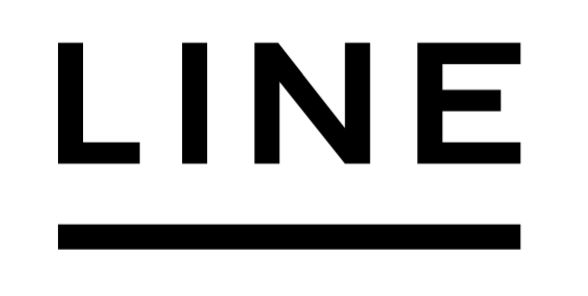The Spectrum Of Gender Identity: Exploring Nonbinary, Genderqueer, And More
Understanding the Spectrum
Gender identity, the deeply felt sense of one’s own gender, is a spectrum rather than a binary. Beyond the traditional categories of male and female exist diverse experiences and expressions of gender.
Beyond Binary: Recognizing Gender as Diverse
Understanding this spectrum requires moving beyond limiting binary concepts and embracing the richness of human experience. Nonbinary individuals identify as neither exclusively male nor female, while genderqueer people reject rigid gender norms and societal expectations altogether. These are just two examples of the many ways in which gender can be expressed and experienced.
It’s crucial to recognize that gender identity is personal and unique to each individual. Some nonbinary individuals may identify with specific pronouns like they/them, while others might use a combination or create their own. Respecting an individual’s chosen pronouns and affirming their gender identity is essential for creating a more inclusive and equitable society.
Exploring the spectrum of gender identity fosters empathy and understanding. By learning about different experiences and perspectives, we can challenge societal norms and create a world where everyone feels safe and accepted to express their true selves.
The Essence of Nonbinary Identity
Gender identity, the deeply felt sense of one’s own gender, is a spectrum rather than a binary. Beyond the traditional categories of male and female exist diverse experiences and expressions of gender.
Understanding this spectrum requires moving beyond limiting binary concepts and embracing the richness of human experience. Nonbinary individuals identify as neither exclusively male nor female, while genderqueer people reject rigid gender norms and societal expectations altogether. These are just two examples of the many ways in which gender can be expressed and experienced.
It’s crucial to recognize that gender identity is personal and unique to each individual. Some nonbinary individuals may identify with specific pronouns like they/them, while others might use a combination or create their own. Respecting an individual’s chosen pronouns and affirming their gender identity is essential for creating a more inclusive and equitable society.
Exploring the spectrum of gender identity fosters empathy and understanding. By learning about different experiences and perspectives, we can challenge societal norms and create a world where everyone feels safe and accepted to express their true selves.
Exploring Genderqueer Experiences
Gender identity, the deeply felt sense of one’s own gender, is a spectrum rather than a binary. Beyond the traditional categories of male and female exist diverse experiences and expressions of gender.
Understanding this spectrum requires moving beyond limiting binary concepts and embracing the richness of human experience. Nonbinary individuals identify as neither exclusively male nor female, while genderqueer people reject rigid gender norms and societal expectations altogether. These are just two examples of the many ways in which gender can be expressed and experienced.
It’s crucial to recognize that gender identity is personal and unique to each individual. Some nonbinary individuals may identify with specific pronouns like they/them, while others might use a combination or create their own. Respecting an individual’s chosen pronouns and affirming their gender identity is essential for creating a more inclusive and equitable society.
Exploring the spectrum of gender identity fosters empathy and understanding. By learning about different experiences and perspectives, we can challenge societal norms and create a world where everyone feels safe and accepted to express their true selves.
Navigating Social and Cultural Constructs
Gender identity, a fundamental aspect of human experience, transcends the confines of traditional binary categories.
Beyond male and female lie diverse expressions and experiences of gender, represented by individuals who identify as nonbinary, genderqueer, or utilize other unique identifiers.
Challenging Gender Norms and Expectations
Navigating social and cultural constructs that often enforce rigid gender norms can be challenging, especially for individuals whose identities fall outside the traditional binary. These societal expectations can limit self-expression and create a sense of exclusion.
Challenging these norms requires awareness, empathy, and a commitment to creating a more inclusive environment.
It involves recognizing that gender is not solely determined by biological sex but is a complex and multifaceted aspect of individual identity.
By embracing diversity in gender expression and challenging assumptions, we can foster a society where everyone feels empowered to live authentically and freely.
Language and Pronouns: Respectful Communication
Gender identity, a fundamental aspect of human experience, transcends the confines of traditional binary categories. Beyond male and female lie diverse expressions and experiences of gender, represented by individuals who identify as nonbinary, genderqueer, or utilize other unique identifiers.
Navigating social and cultural constructs that often enforce rigid gender norms can be challenging, especially for individuals whose identities fall outside the traditional binary. These societal expectations can limit self-expression and create a sense of exclusion.
Challenging these norms requires awareness, empathy, and a commitment to creating a more inclusive environment.
It involves recognizing that gender is not solely determined by biological sex but is a complex and multifaceted aspect of individual identity.
By embracing diversity in gender expression and challenging assumptions, we can foster a society where everyone feels empowered to live authentically and freely.
Coming Out and Finding Community
For individuals who identify as nonbinary or genderqueer, finding community and support is crucial for navigating the complexities of social and cultural constructs.
These communities provide safe spaces where individuals can connect with others who share similar experiences, fostering a sense of belonging and validation.
Online platforms, support groups, and local organizations dedicated to LGBTQ+ rights offer valuable resources and networks for building connections.
Engaging with these communities allows individuals to learn from one another, share their stories, and advocate for greater understanding and acceptance within society.
Coming out as nonbinary or genderqueer can be a deeply personal journey, often accompanied by feelings of vulnerability and uncertainty.
It involves challenging societal norms and potentially confronting resistance from family, friends, or colleagues who may not fully understand these identities.
However, coming out can also be empowering, allowing individuals to live more authentically and connect with others who share their experiences.
It’s a process that should unfold at an individual’s own pace, with support from trusted allies and resources available to navigate potential challenges.
The journey of exploring and embracing one’s gender identity can be transformative, empowering individuals to live more authentically and contribute to a more inclusive society.
By fostering empathy, understanding, and acceptance, we can create a world where everyone feels safe and valued for who they truly are.
Personal Journeys and Identities
Gender identity, the deeply felt sense of one’s own gender, is a spectrum rather than a binary. Beyond the traditional categories of male and female exist diverse experiences and expressions of gender.

Understanding this spectrum requires moving beyond limiting binary concepts and embracing the richness of human experience. Nonbinary individuals identify as neither exclusively male nor female, while genderqueer people reject rigid gender norms and societal expectations altogether. These are just two examples of the many ways in which gender can be expressed and experienced.
It’s crucial to recognize that gender identity is personal and unique to each individual. Some nonbinary individuals may identify with specific pronouns like they/them, while others might use a combination or create their own. Respecting an individual’s chosen pronouns and affirming their gender identity is essential for creating a more inclusive and equitable society.
Exploring the spectrum of gender identity fosters empathy and understanding. By learning about different experiences and perspectives, we can challenge societal norms and create a world where everyone feels safe and accepted to express their true selves.
Expressing Gender through Clothing, Appearance, and Behavior
Gender identity, the deeply felt sense of one’s own gender, is a spectrum rather than a binary. Beyond the traditional categories of male and female exist diverse experiences and expressions of gender.
Understanding this spectrum requires moving beyond limiting binary concepts and embracing the richness of human experience. Nonbinary individuals identify as neither exclusively male nor female, while genderqueer people reject rigid gender norms and societal expectations altogether. These are just two examples of the many ways in which gender can be expressed and experienced.
It’s crucial to recognize that gender identity is personal and unique to each individual. Some nonbinary individuals may identify with specific pronouns like they/them, while others might use a combination or create their own. Respecting an individual’s chosen pronouns and affirming their gender identity is essential for creating a more inclusive and equitable society.
Exploring the spectrum of gender identity fosters empathy and understanding. By learning about different experiences and perspectives, we can challenge societal norms and create a world where everyone feels safe and accepted to express their true selves.
- Nonbinary
- Genderqueer
- Agender
Internal vs. External Experiences of Gender
Gender identity, the deeply felt sense of one’s own gender, is a spectrum rather than a binary. Beyond the traditional categories of male and female exist diverse experiences and expressions of gender.
Understanding this spectrum requires moving beyond limiting binary concepts and embracing the richness of human experience. Nonbinary individuals identify as neither exclusively male nor female, while genderqueer people reject rigid gender norms and societal expectations altogether. These are just two examples of the many ways in which gender can be expressed and experienced.
It’s crucial to recognize that gender identity is personal and unique to each individual. Some nonbinary individuals may identify with specific pronouns like they/them, while others might use a combination or create their own. Respecting an individual’s chosen pronouns and affirming their gender identity is essential for creating a more inclusive and equitable society.
Exploring the spectrum of gender identity fosters empathy and understanding. By learning about different experiences and perspectives, we can challenge societal norms and create a world where everyone feels safe and accepted to express their true selves.
- Nonbinary
- Genderqueer
- Agender
The Importance of Self-Discovery and Acceptance
The journey of self-discovery is a deeply personal and often transformative experience. It involves exploring one’s thoughts, feelings, beliefs, values, and ultimately, who they truly are. This exploration can lead to profound insights about ourselves, our place in the world, and what we want out of life.
Acceptance plays a crucial role in this journey. It means acknowledging and embracing all aspects of ourselves – the strengths, weaknesses, fears, and dreams. It’s about recognizing that we are complex and multifaceted beings, worthy of love and respect just as we are.

Self-acceptance is not about perfection; it’s about cultivating a compassionate and understanding relationship with ourselves. It involves letting go of unrealistic expectations and embracing our imperfections.
When we accept ourselves fully, we create space for growth and change. We become more resilient in the face of challenges, more confident in our decisions, and more authentic in our interactions with others.
This journey of self-discovery and acceptance is ongoing. It’s a lifelong process of learning, evolving, and becoming more comfortable with who we are.
Resources and Support
Navigating the complexities of gender identity can sometimes feel overwhelming. Fortunately, there are resources and support systems available to guide individuals on their journeys of self-discovery and acceptance.
Organizations and Advocacy Groups for LGBTQIA+ Individuals
Here are some valuable resources for LGBTQIA+ individuals seeking information, support, and community:
Organizations and Advocacy Groups:
-
The Human Rights Campaign (HRC):
-
GLAAD:
-
National Center for Transgender Equality:
-
The Trevor Project:
-
Gender Spectrum:
Online Resources and Support Groups:
-
Trans Lifeline:
-
PFLAG (Parents, Families, and Friends of Lesbians and Gays):
-
GLAAD:
Remember, you are not alone. There are people who care about you and want to support your journey. Don’t hesitate to reach out for help when you need it.
Therapists and Counselors Specializing in Gender Identity
For individuals questioning or exploring their gender identity, finding supportive resources is crucial. Here are some avenues for seeking guidance and connection:
-
Therapists and Counselors Specializing in Gender Identity:
Seeking therapy with a therapist who specializes in LGBTQ+ issues, particularly gender identity, can provide a safe and confidential space to explore your feelings, gain insights, and develop coping strategies.
-
Support Groups:
Connecting with others who share similar experiences through support groups can offer invaluable emotional support, understanding, and a sense of community. Many online and in-person support groups cater specifically to individuals exploring their gender identity.
-
Online Forums and Communities:**
Online platforms dedicated to LGBTQ+ individuals often provide forums or discussion boards where you can connect with others, ask questions, share experiences, and access information.
Online Communities and Forums for Connection and Support
Finding community and support is crucial for anyone navigating the complexities of gender identity.
There are numerous online communities and forums specifically designed to connect individuals who identify as nonbinary, genderqueer, or are questioning their gender. These platforms offer safe spaces for sharing experiences, asking questions, offering advice, and building supportive relationships with others who understand what they’re going through. Some popular options include:
* **Reddit:** Subreddits like r/NonBinary, r/Genderqueer, and r/asktransgender provide spaces for discussion, support, and information sharing.
* **Discord:** Many LGBTQ+ servers on Discord cater to specific identities and interests, offering chat rooms, voice channels, and events for building community.
* **Facebook Groups:** Numerous Facebook groups dedicated to nonbinary, genderqueer, and transgender individuals exist, providing local and online connections and support networks.
* **Specialized Websites and Forums:** Websites like Gender Spectrum and Trans Lifeline offer resources, forums, and support services specifically tailored to the needs of transgender and nonbinary individuals.
In addition to online communities, many cities have LGBTQ+ centers or organizations that offer support groups, workshops, and social events for gender-diverse individuals.
Get Rechargeable Clitoral Vibrators
Buy Realistic Vibrators for Realistic Quiet Operation
Discover Trendy Vibrators for Modern Users
Shop Bullet Vibrators with Elegant and Minimalist Designs
Shop Vibrators Controlled by Innovative Remote Technology
Explore Vibrators That Offer the Ultimate Luxury Comfort
Get Your Hands on Wireless Vibrators Now
Buy Waterproof Vibrators for Solo or Partner Fun
Arielle Likes to Cook
Beautifullys Magazine
- Jaw Fillers For A Defined Jawline Near Ockley, Surrey - October 2, 2025
- How To Inject Tear Trough Filler - October 1, 2025
- How Much Lip Filler For First Time - September 29, 2025
Author
Related Posts
What Does It Mean To Be Polyamorous And How Does It Affect Commitment?
Defining Polyamory Polyamory is a relationship style characterized by the *conscious* practice of having multiple, intimate relationships with the *informed consent* of...
Read out allThe Role Of CBD Gummies In Reducing Inflammation And Joint Pain
Mechanism of Action Understanding how a substance exerts its effects on the body is crucial for comprehending its potential benefits. This principle...
Read out allSkoliosexuality: Attraction Beyond Binary Gender Constructs
Understanding Skoliosexuality Skoliosexuality, a term encompassing attraction to people who identify outside the traditional binary genders of male and female, delves into...
Read out allThc Drinks In Arkansas AR
Legal Status Navigating the legal landscape surrounding THC-infused beverages in Arkansas can be complex. While recreational marijuana remains illegal, medical marijuana patients...
Read out allWhy Pansexuality Is More Than Just A Trend And What It Means In Today’s World
The Evolving Understanding of Sexuality Our understanding of sexuality has undergone significant transformations over time, moving beyond rigid binary classifications to embrace...
Read out allThe Real Cost Of Ghosting And How To Avoid Doing It To Others
The Emotional Impact of Ghosting Ghosting, the act of abruptly ending communication without explanation, can leave a lasting emotional toll on the...
Read out all